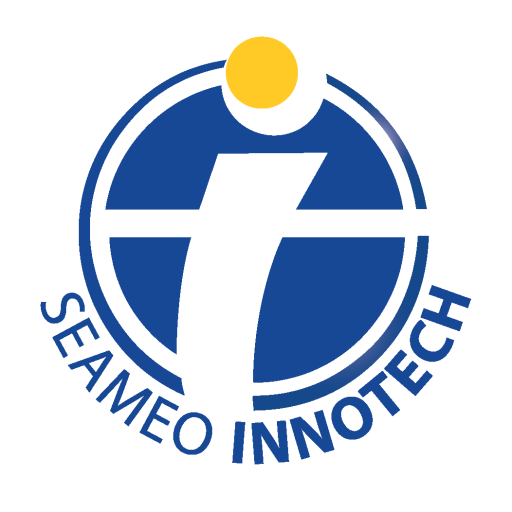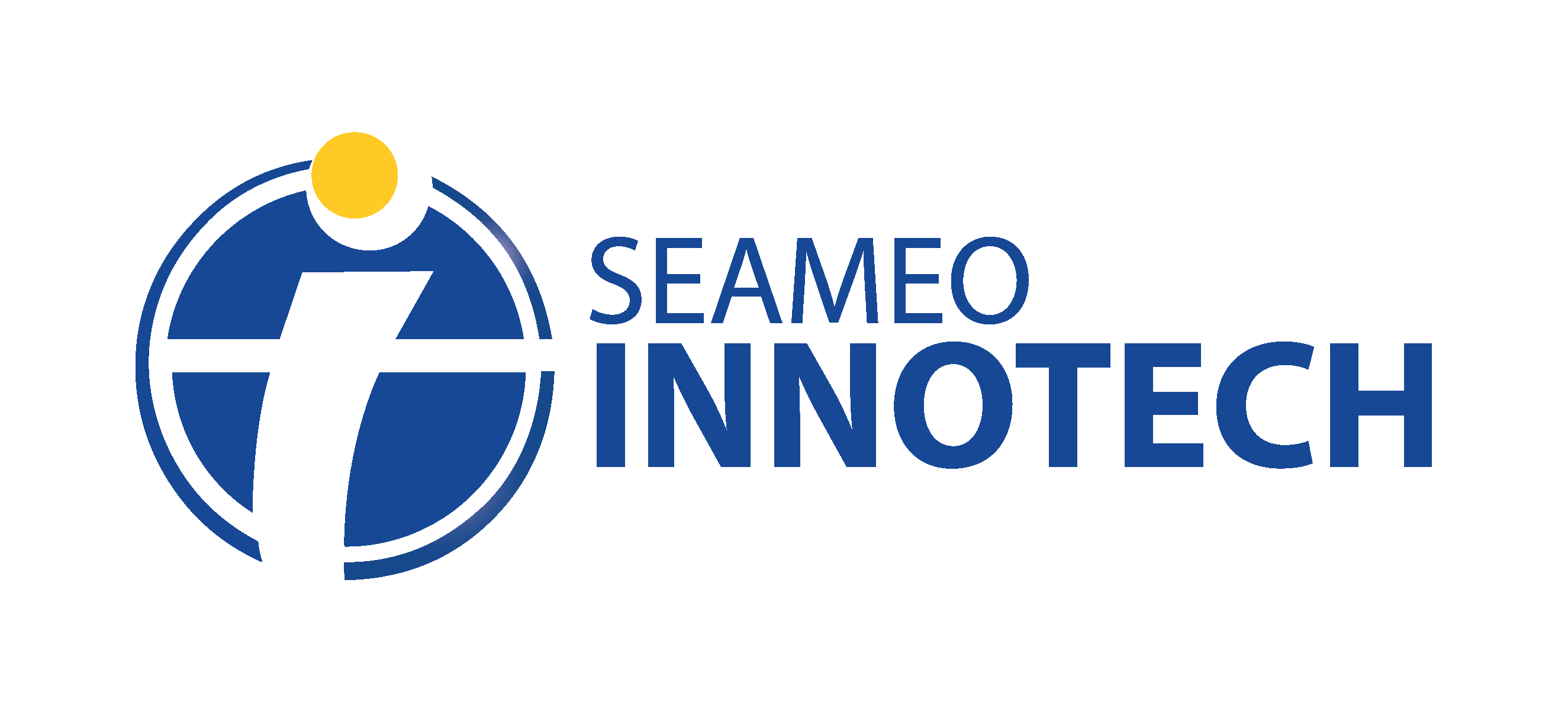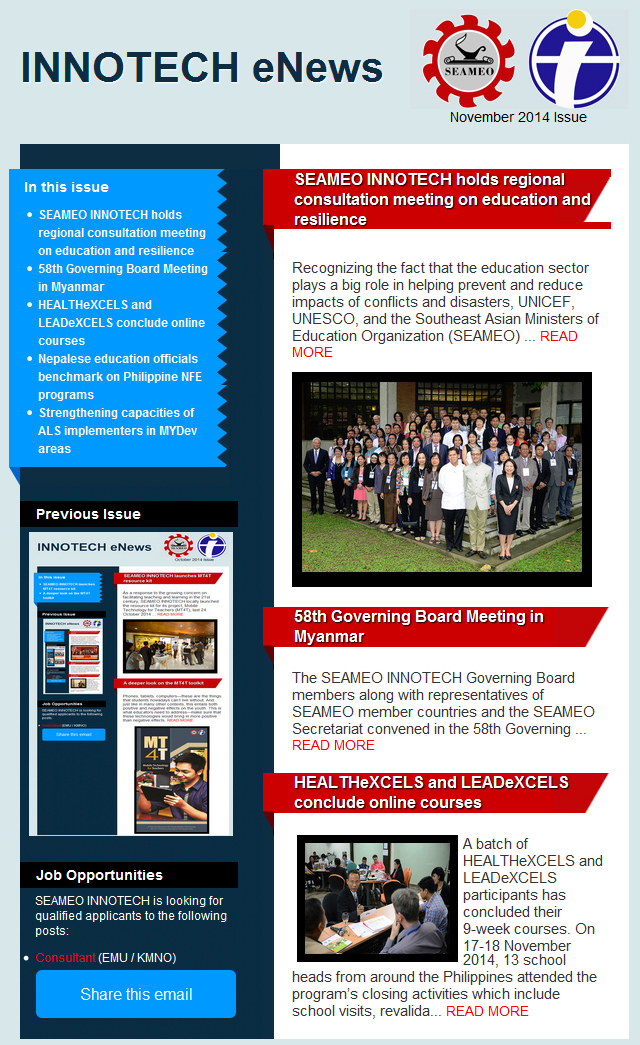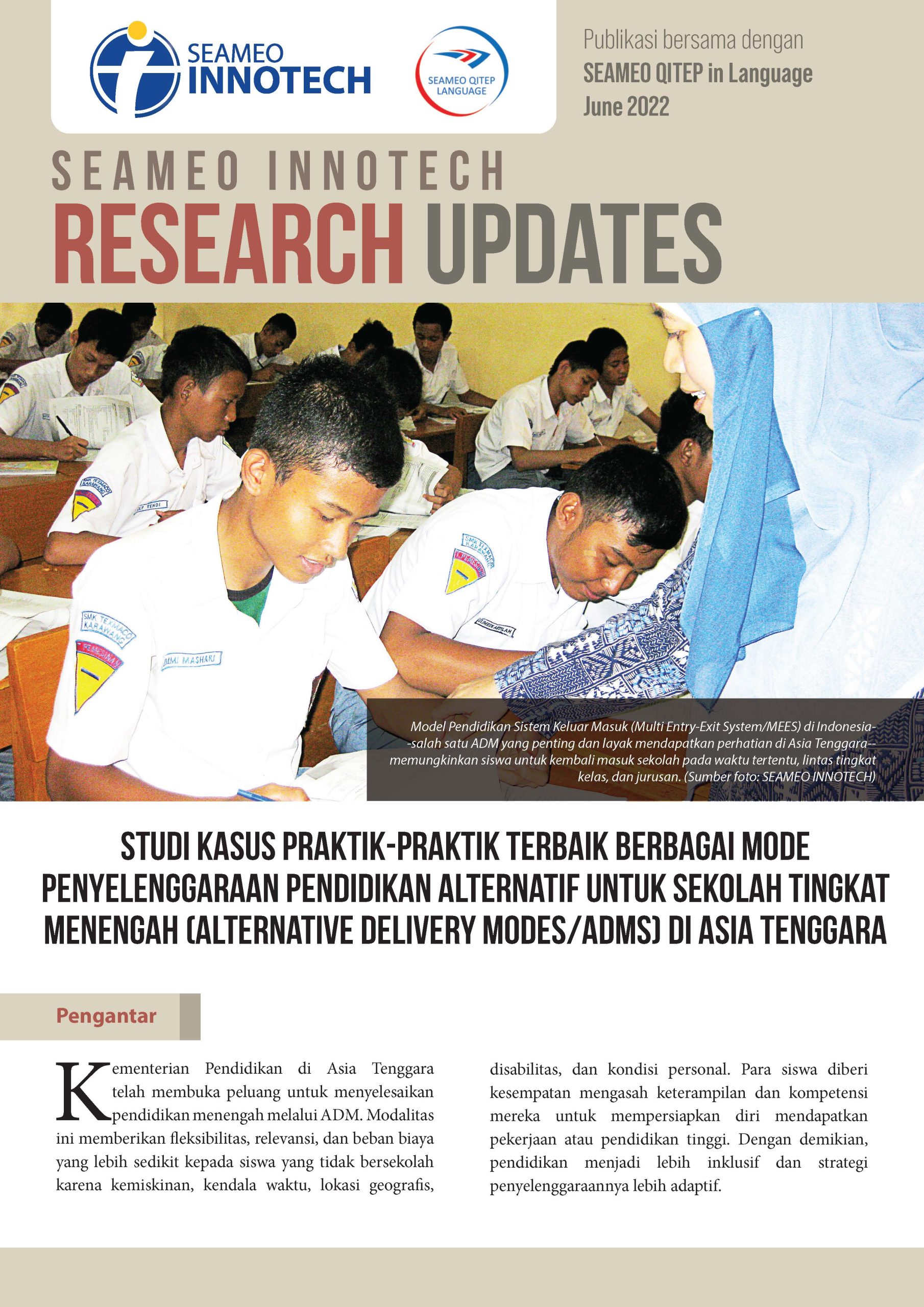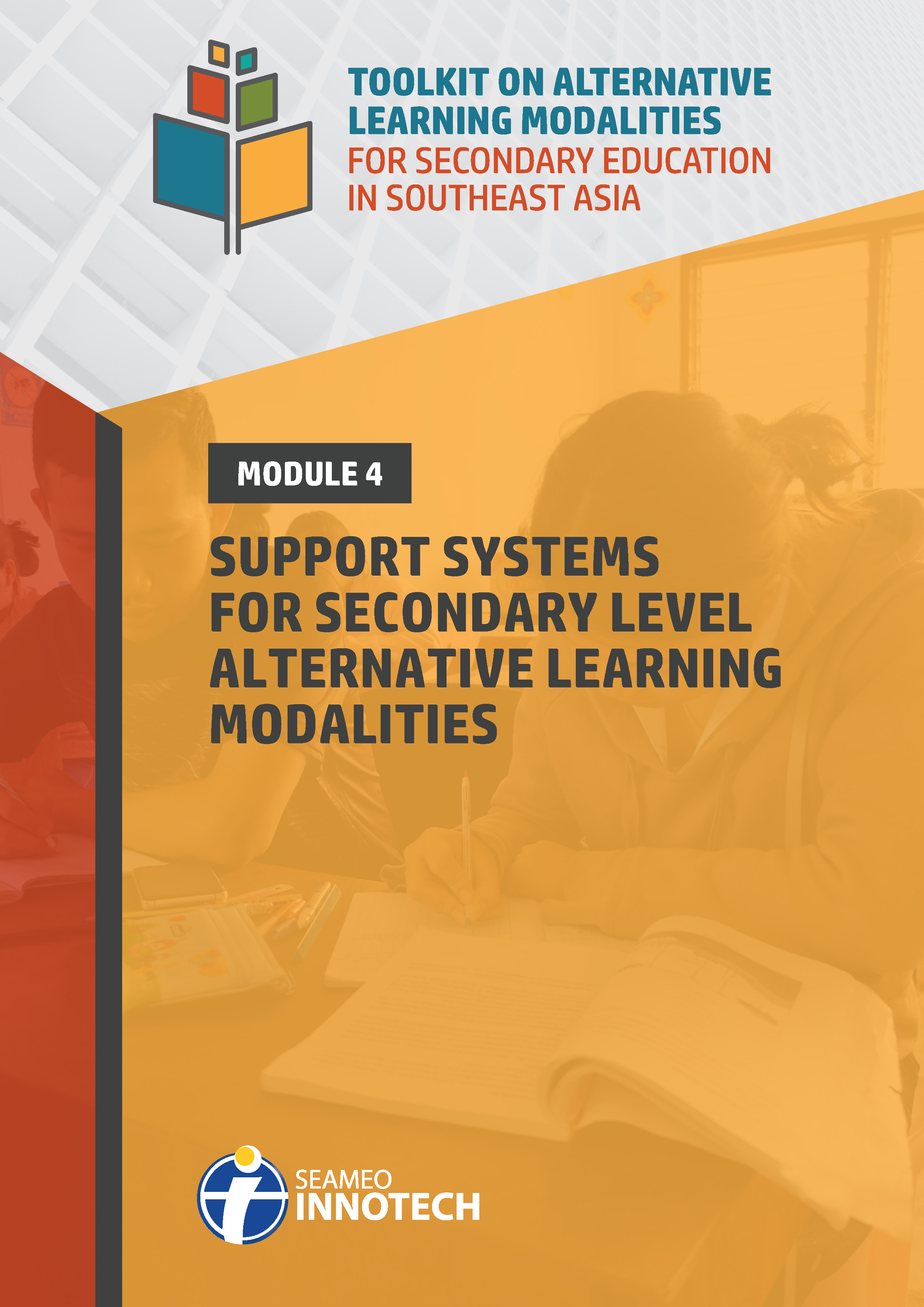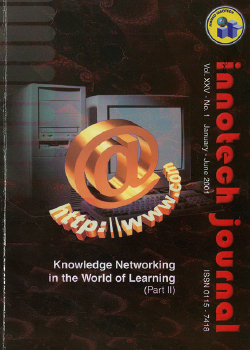
Issue: January – June 2001
Foreword: Perspectives and learning’s on how technologies have changed the world of learning, how people have been affected by the changes and how they are responding to new technologies were the focus of SEAMEO INNOTECH’s 7th International Conference held in December 2000.
With the theme “Knowledge Networking in the World of Learning,” the conference provided a venue for educators from Southeast Asia and their counterparts from across the globe to share their experiences and insights on the interplay of knowledge and technology.
The INNOTECH Journal features some of the papers presented during said conference in a two-part edition. On this issue, Shyamal Majumdar of the Colombo Plan Staff College for Technical Education talks about the characteristics of web instructions and presents a framework of analysis to select and appropriate web-based training to suit learners’ needs. In his paper “A Framework for Selecting Appropriate Web-Based Instruction,” Majumdar reports about an instructional design that uses web learning and problem solving to encourage higher order of thinking.
Rosario J. De Guzman of the Bureau of Non-Formal Education, Philippine Department of Education, Culture and Sports(DECS), talks about the salient features of the NFE Accreditation & Equivalency (A&E) System, a project of the Bureau of Nonformal Education in her paper titled “The Philippine Nonformal Accreditation and Equivalency Project: Making a Difference.” The NFE A&E system, awarded the UNESCO International Literacy Prize 2000, is intended to answer to the growing illiteracy problem and poverty by upgrading the skills, knowledge and competencies of the learners. The author illustrates how the alternative learning system offers a ready choice and option for the most disadvantaged and underserved sections of the country.
Godofredo Gallega, college president of the Polytechnic State College of Antique in the Philippines, reveals their efforts to implement a distance learning program with the use of technologies in his paper “Distance Learning: A Step Worth Taking.”
Prapatpong Senarith, author of “The E-Communities: Opportunities & Challenges Towards Educational Reform in Thailand,” reveals that while the world is stepping into e-communities, Thailand needs even more technology, especially computers and telecommunications. Senarith identifies various issues that affect the response of Thailand’s educational system to technology. He likewise proposes several measures by which proper proactive education reforms through the use of IT may be brought about.
John D. Mulhern, professor at the University of South Carolina, in his paper “Quality Control of Teacher In-Service Programs in the Era of the Internet and Off-Campus Programs,” lays down the standards for continuing teacher education designed to address the programs offered to teachers who have completed initial training.
Alexander Flor and Alice Rillo of SEAMEO SEARCA (Regional Center for Graduate Study and Research in Agriculture) present the case of the Southeast Asian Sustainable Agriculture Knowledge Network (SEASAKNet) in the “Development Applications of Knowledge Networking.” SEASAKNet is intended to contribute to the policy process as well as to the curriculum development process in the ministries of agriculture in Southeast Asia. This is in line with the shift of emphasis from information generation, storage and retrieval to information processing, integration, synthesis and packaging.
C.J. Patrick Nolan of the Massey University in New Zealand, together with David H. McKinnon, presents the New Zealand Integrated Curriculum Project in the “Integrated Secondary School Education and IT Augmented Learning.” Nolan reveals some of the key research findings regarding the educational effectiveness of the curriculum programs based on the integrated curriculum model, and provides, as well, examples of how the model works in practice.
Sam Wong of Knowledge Connect PTE., LTD. in Singapore examines the possibilities of a virtual learning environment pervaded by video content in his paper “Video Management Systems as Pedagogical Agents.” Wong describes the progress achieved to date in enhancing such pedagogical agent as video management system for virtual learning, and discusses planned work in this area. He also reveals the issue of distribution over a massive learning that is not supported by a broadband networking system.
To access all articles in this issue, email us at info@seameo-innotech.org

